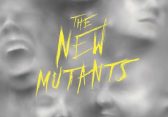The Limehouse Golem
1 September 2017
A series of murders has shaken the community to the point where people believe that only a legendary creature from dark times - the mythical so-called Golem - must be responsible.
Juan Carlos Medina
109 mins
A serial killer dubbed as the mythical Golem is stalking the streets of Victorian London and leaving grisly clues to their identity. It’s up to Detective John Kildare (Bill Nighy) and Constable John Flood (Daniel Mays) to solve the crime before the killer strikes again. Meanwhile, music hall star Elizabeth Cree (Olivia Cooke) is charged with the crime of poisoning her husband John Cree and is awaiting the date of her hanging. Kildare finds evidence linking John, along with three other suspects, to the Golem and is convinced he can crack both cases, ultimately saving Elizabeth from her impending execution.
A usually brilliant Nighy puts in a rare miss of a performance here as John Kildare, a detective drafted in to lead the case but is essentially used as a scapegoat – rumours about his sexuality have hindered his career, and The Limehouse Golem murder case is deemed virtually unsolvable, so he is the perfect candidate to lump it on. Unfortunately, Bill just appears bored and uninterested rather than the defeated, weather-beaten veteran you’d expect. Olivia Cooke fairs a little better, but it’s hard to feel for her plight when she still looks like she’s spent hours in front of a make up mirror while behind bars. Daniel Mays is passable as a character who is essentially Dr Watson to Kildare’s Holmes, while Douglas Booth as music hall star Dan Leno is probably the most believable and entertaining of the bunch.The cockney accents are incredibly on the nose too, almost to the point of mockery.
For a murder mystery, The Limehouse Golem is nowhere near as smart as it thinks it is. Its big final reveal is built up to be a shocking turn, but it’s fairly obvious from the outset (or at least, 20 minutes in) who the culprit is. Nevertheless, the extended backstories to the four suspects are interesting enough, and the method used to recreate the murders is visually pleasing; the killer leaves a diary describing the murders, and Kildare reads out the grisly details to them. What we see is how it would look if the current suspect had undertaken the murder, and every one is convincing enough. The level of gore is surprising albeit unnecessary, although shots don’t linger too long on them so it’s never too gratuitous.
What The Limehouse Golem should be praised for is its meticulous production design. Victorian London is recreated brilliantly, and I spent more time than I should have trying to notice various background features in the frame. From the grimy streets to the smoke filled music hall, the scenes, characters and buildings are perfectly dressed.
The Limehouse Golem never feels like a cinematic event, settling instead for a two part BBC Christmas special feel. No doubt in a year or two, with a few trims removing the gore, that’s exactly where it will end up.



























